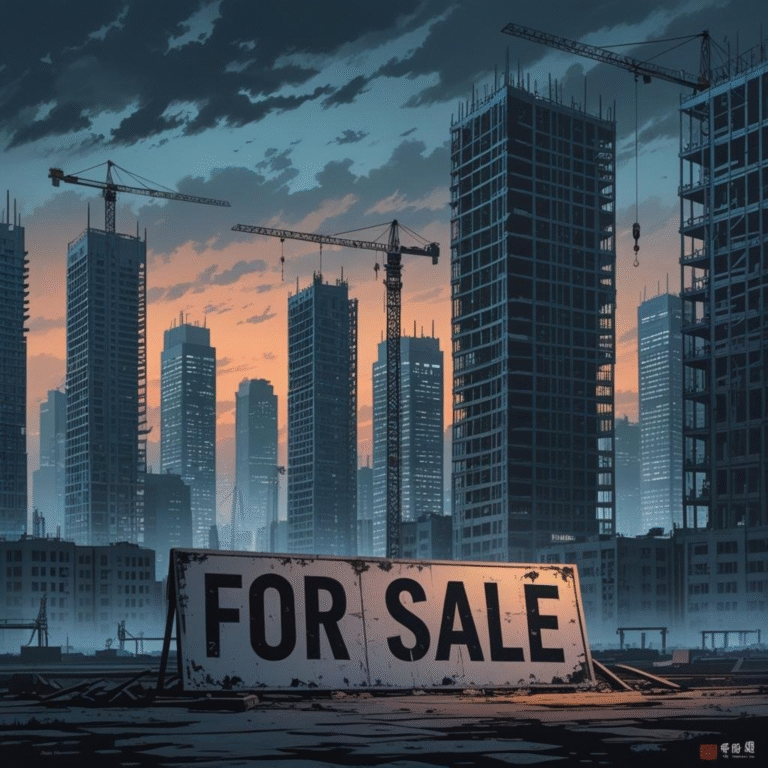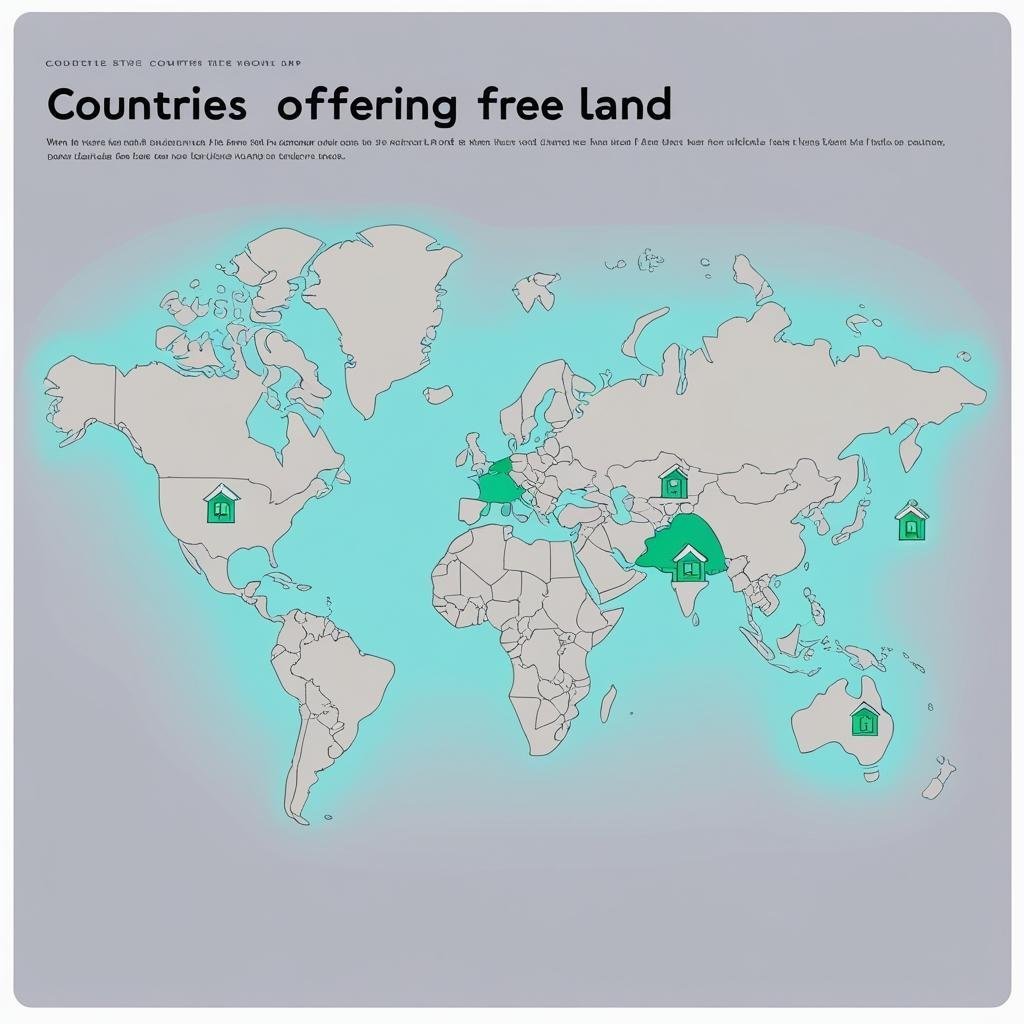🔍 Introduction: The Dream Turned Nightmare
For decades, China’s real estate sector has been the backbone of its miraculous economic rise. Tall skyscrapers, futuristic cities, and booming construction projects symbolized the “Chinese Dream.” But behind the glossy façade lies a deeper, more alarming truth — China is in the middle of a full-scale property crisis.
From Evergrande’s debt default to ghost cities with no residents, China’s real estate empire is crumbling — and the consequences could ripple across the globe.
📈 The Rise of China’s Real Estate Boom
🏗️ The Boom Timeline:
- 1990s: Economic liberalization policies encourage home ownership.
- 2000s: Massive urban migration fuels property demand.
- 2010–2020: Developers expand aggressively. Local governments sell land to raise money. Property prices soar.
China’s real estate contributed to nearly 30% of GDP by 2020 — an alarming dependency for any nation.
💼 Why Real Estate Became So Big:
- Families used homes as primary investments.
- Developers were backed by massive loans.
- Local governments earned revenue from land sales.
- Banks relied on mortgage growth.
The bubble formed gradually — with speculation, overbuilding, and unchecked borrowing.
🧨 What Triggered the Collapse?
1. Overleveraging & Evergrande’s Fall
China’s second-largest property developer, Evergrande, accumulated over $300 billion in debt. In 2021, it defaulted, triggering panic in the entire industry.
Other developers followed: Country Garden, Kaisa Group, Fantasia Holdings — all either defaulted or faced insolvency.
2. Ghost Cities & Overbuilding
In cities like Ordos and Tianducheng, thousands of apartments lie completely vacant. Despite low occupancy, construction didn’t stop.
These cities:
- Have zero rental yield
- Attract no migration
- Are built purely to inflate GDP and developer portfolios
3. Three Red Lines Policy
In 2020, China’s central bank introduced “Three Red Lines”, which set strict borrowing limits for property firms:
- Liability-to-asset ratio < 70%
- Net gearing ratio < 100%
- Cash-to-short-term debt ratio ≥ 1
These rules exposed how dangerously leveraged developers were — causing a liquidity crisis.
4. Falling Buyer Confidence
With unfinished projects and delayed possession, Chinese homebuyers began boycotting mortgage payments, triggering a dangerous feedback loop.
📉 What’s Happening Now in 2025?
📉 Real Estate Prices:
- Property prices have fallen 20–35% in many cities.
- Secondary sales are slowing down rapidly.
- Young people are choosing not to buy homes at all.
🏗️ Construction Halted:
Millions of apartments remain half-built. Developers lack funds to complete them. Buyers have paid — but have no homes to move into.
🏦 Banking Risk:
Local banks are heavily exposed to bad loans. A property crash could result in a systemic banking crisis, similar to what triggered the 2008 crash in the U.S.
🌏 Global Implications of China’s Real Estate Crisis
- Supply Chain Impact
China’s construction slowdown affects global demand for:- Steel
- Cement
- Copper
- Machinery & Equipment
- Global Recession Risk
If China — the world’s second-largest economy — slows down drastically, global growth forecasts will be revised down. - Investor Panic
Global investors and banks exposed to Chinese real estate bonds are withdrawing.
Example: BlackRock, HSBC, and UBS have written down billions in exposure.
🇮🇳 What Can India Learn?
India is still in a growth phase — but the warning signs are clear:
- Regulate housing loans strictly
Don’t let banks lend blindly to real estate firms. - Avoid overbuilding in Tier-2 & Tier-3 cities
Learn from China’s ghost cities. - Encourage affordable housing, not luxury projects
Real demand lies in affordable units, not luxury condos.
🧠 Psychology Behind the Crisis: “Real Estate as a Piggy Bank”
In China, people don’t invest in stocks or mutual funds as much as in property. In fact, 70% of household wealth is tied to real estate. When housing collapses, consumer confidence collapses too, slowing down spending and growth.
This is why China’s housing crisis is not just economic — it’s deeply psychological and cultural.
📊 The Stats That Matter (as of 2025)
| Metric | Value |
|---|---|
| Total vacant homes | 65 million+ |
| Share of GDP from real estate | ~29% |
| Evergrande total debt | $328 billion |
| Ghost cities identified | Over 50 |
| Property price fall (avg.) | 20–35% |
| Construction halts | 45% of ongoing projects |
🔍 What’s the Government Doing?
- Rate cuts to improve liquidity
- Homebuyer subsidies to revive demand
- Debt restructuring for developers
- But: No major bailout — China doesn’t want to repeat 2008 U.S. mistakes.
🛑 The Real Danger: Social Unrest
When people:
- Lose life savings in failed projects
- Can’t pay EMIs
- Get no possession of their homes
They protest. In 2023 and 2024, mortgage boycotts became common in Henan, Hunan, and Jiangsu.
This is why the housing crisis also poses political risks for China’s government.
✅ Conclusion: The Bubble Has Burst. What Comes Next?
China’s property sector was once the engine of its miracle economy. Now, it’s turning into a drag on growth.
The next few years will determine:
- If China can recover through reforms
- Or whether it will face a Japan-style “Lost Decade”
For global observers and economies like India, the lesson is simple: growth at any cost isn’t sustainable — especially when it’s built on borrowed time.




